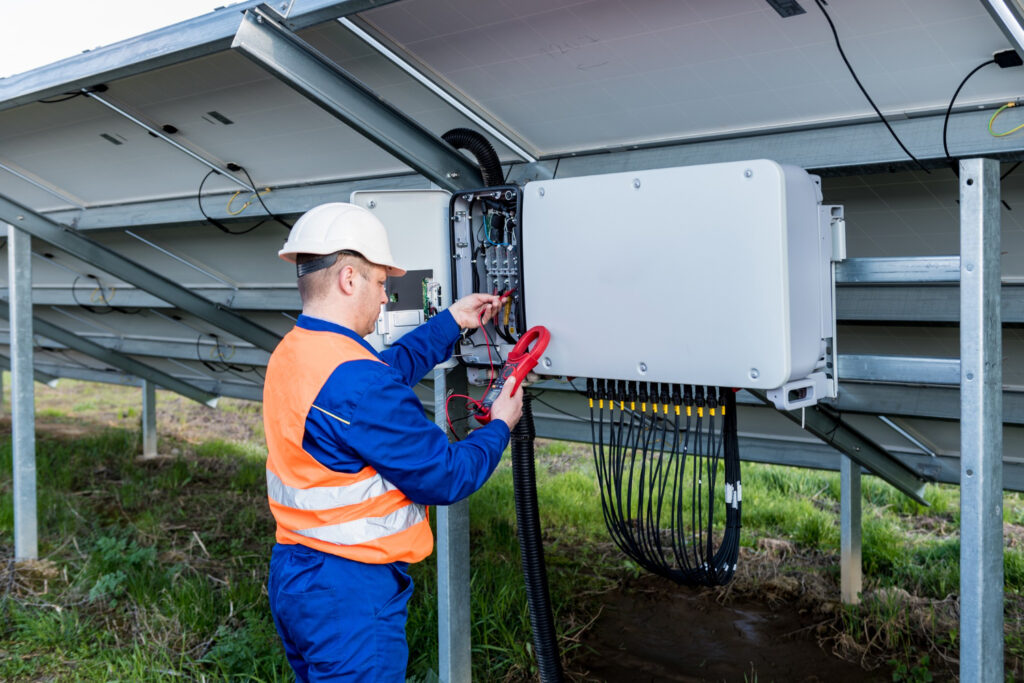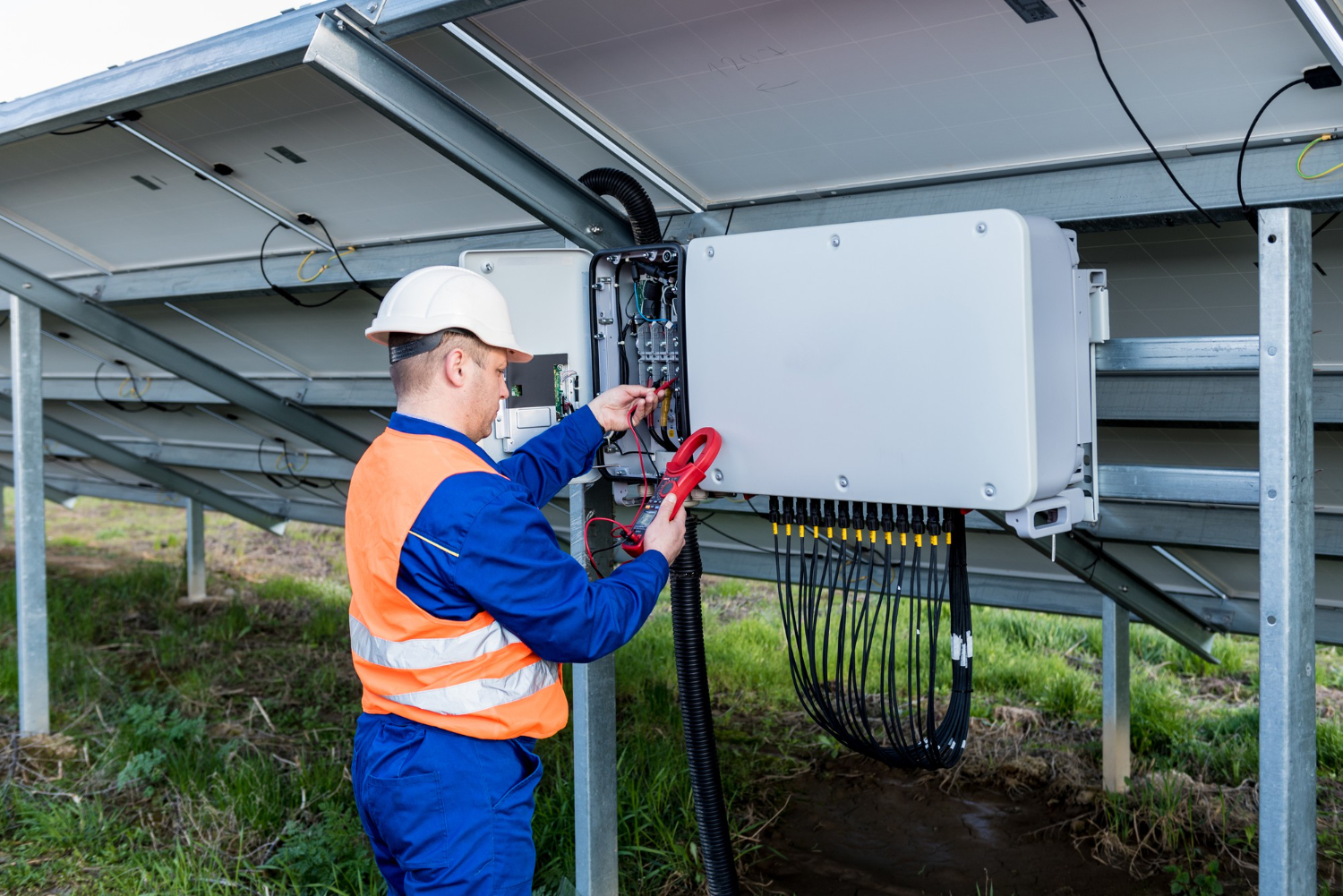Solar energy offers homeowners in Boulder City a smart, eco-conscious way to power their homes. But when part of that system starts failing, particularly the inverters, frustrations rise. A faulty or inefficient inverter can stop your panels from converting sunlight into usable electricity, even if they’re soaking up the sun all day long. Whether it’s a sudden drop in energy production or unexplained performance issues, your solar system’s health depends largely on one component: the inverter.
Choosing the right type of inverter can have a long-term impact on the reliability, cost, and repair needs of your system. For many homeowners, the choice comes down to microinverters versus string inverters. Both have clear benefits and drawbacks, especially when it comes to repairs and how they hold up to local conditions. Knowing the differences can help you avoid costly downtime and unnecessary service calls during Boulder City’s hottest months.
Understanding Microinverters
Microinverters operate on a simple yet efficient concept. Instead of relying on a single unit to do all the work, microinverters are installed on each individual solar panel. Their main job is to convert the direct current (DC) electricity collected by the panels to alternating current (AC) electricity used inside your home. One of the biggest advantages of this design is that it allows each panel to function independently. If one panel isn’t performing well—say it’s shaded or dirty—the others are usually unaffected.
Here are some key benefits microinverters offer:
– Better energy conversion in systems impacted by shade
– Individual panel monitoring for more precise performance tracking
– Reduced impact if one unit fails
This setup is especially helpful for homes in areas with partial shading throughout the day or roofs that face multiple directions. For Boulder City homes surrounded by trees, chimneys, or other obstacles, microinverters can minimize the loss in total system output.
Still, microinverters aren’t without their repair challenges. Since there’s one unit on every panel, the risk of individual component failure increases. If a single microinverter breaks down, it can be harder to detect without professional testing equipment. And given that each inverter is typically mounted underneath the panel, accessing it for repairs often involves temporarily removing the panel, which can add time and cost. Homeowners often discover issues when they notice a small dip in their electricity generation or during routine system checks.
It’s not uncommon for Boulder City homeowners to report lowered energy output during periods of peak sunshine. In those cases, faulty microinverters are often the root cause. With high summer temperatures and intense UV exposure, components can wear faster without timely maintenance.
Exploring String Inverters
A string inverter offers a more centralized solution. Instead of having multiple small inverters across each panel, this setup includes one main unit controlling a whole string of solar panels—typically located near your main electric panel or inside your garage. It’s wired so that the energy collected from the entire string is converted at one point, simplifying the system and reducing the number of individual components that may fail.
String inverters have a few standout advantages for Boulder City residents:
– Simplified layout, which makes repairs and replacements easier
– Generally lower installation and hardware costs
– Longer track record of reliability in traditional home layouts
That said, problems with string inverters tend to affect the whole system, not just one panel. If one panel fails or shades over, overall performance drops across the board. This can lead to a noticeable dip in electricity output even if most of the panels are still in good shape.
For example, a homeowner in Boulder City with a traditional roof layout and little to no shading might do just fine with a string inverter. However, during the summer, the intense heat can affect the inverter’s efficiency, especially if it’s installed in a poorly ventilated space like a garage. Dust buildup inside the unit, higher-than-normal temperatures, or worn-out internal fans can all lead to breakdowns if not addressed quickly.
A noticeable sign of string inverter trouble is when your entire solar system suddenly underperforms despite clear weather. Unlike microinverters where the issue might be isolated, any malfunction here is typically system-wide. When that happens, professional troubleshooting becomes necessary to rule out both equipment and installation-related faults.
Comparing Microinverters and String Inverters
When deciding between microinverters and string inverters for solar repair in Boulder City, knowing the direct differences helps homeowners avoid repeat service calls and unexpected downtimes. Each option performs differently under local conditions, especially with Boulder City’s high summer temperatures and extended sun exposure.
Here’s a direct comparison based on local factors:
– Performance in Shade: Microinverters work independently and manage partial shade better. If one panel is shaded, it doesn’t affect the others. In contrast, with string inverters, a single shaded panel can reduce the output of the entire string.
– Monitoring Capabilities: Microinverters allow for panel-level monitoring, so it’s easier to detect small issues early. String inverters typically monitor the system as a whole, so spotting a single failing panel takes longer.
– Repair Complexity: Microinverters take longer to repair because they require panel removal to access faulty units. String inverters are easier to access and service, often located near electrical panels or areas with better reach.
– Upfront and Repair Costs: String inverters usually cost less to install and replace. Microinverters may carry higher costs since multiple units are involved, but they offer long-term flexibility and better system control.
– Lifespan in Heat: High summer temperatures can cause thermal stress. For string inverters, this could mean fan failures or internal overheating. Microinverters, being distributed across panels, may spread that heat load better, but still need to be inspected regularly for signs of UV or moisture damage.
Boulder City’s intense sunlight can be an asset or a liability, depending on how well panels and inverters manage that energy. Both choices work well for residential setups, so the smarter option depends more on your home’s layout, shading, and personal repair tolerance.
Selecting the Right Inverter for Your Boulder City Home
Choosing between these inverters tends to come down to the details of your property. A flat roof with minimal shade may support a string inverter setup well. Homes with more complex angles or obstructions will benefit from microinverters, where each panel operates on its own schedule. Matching your home’s layout with the right inverter option can reduce long-term repair costs and extend the life of your solar system.
Think about a few important factors:
1. Roof layout – Does shading vary throughout the day?
2. Budget – Are you planning for lower installation costs or long-term monitoring capacity?
3. Repair tolerance – Is it better to risk total system disruption or have minor, isolated inverter issues?
4. Maintenance access – Are you comfortable with technicians needing to remove panels for specific repairs?
Each of these points holds weight when it comes to system outages and panel performance. Our professionals consider all these variables during site assessments and after diagnostic reports, especially when thermal or efficiency issues come up during extreme summer conditions.
Our technicians often work with Boulder City residents who didn’t know which type of inverter their system had until something went wrong. By understanding your current setup and inverter type, you can make repairs faster and reduce energy loss during those repairs.
Keeping Solar Systems Efficient in Boulder City Conditions
To get consistent solar performance in Boulder City, systems require effective maintenance. Dry heat may seem harmless, but it affects cooling fans, wiring, connectors, and internal inverter components. Over time, resistance builds, sensors fail, and efficiency drops—even if the panels look fine from outside.
Preventative maintenance and timely repairs play a major role in keeping inverters working well, especially during peak summer demand when homes rely more on electricity for cooling.
Watch out for these signs of system inefficiency:
– A sudden drop in energy production without a change in weather
– Alerts from your solar monitoring app or system
– Inverter lights blinking red or showing error messages
– Inverter fan noise changes—louder or not running
Our technicians recommend system checks during the late spring to avoid major losses once the heat fully sets in. With early detection, inverter issues can be resolved before they trigger entire system failures.
Reliable Solar Repairs When It Matters Most
Every solar system depends on functioning inverters to turn light into usable power. When those inverters break down, even the best solar panels can’t do their job. Boulder City’s intense summer heat puts extra pressure on inverters, making regular maintenance and suitable repair strategies more important than ever.
Whether you’re dealing with individual panel faults from a microinverter issue or a full-system staging problem linked to a string inverter, getting the right repair approach early can help you avoid downtime, loss of efficiency, and excess replacement costs. Our professionals offer experience with both types and work directly with your home’s unique setup.
From troubleshooting faults to performing safe inverter replacements, our technicians know how to keep energy flowing through Boulder City homes. The more informed your decisions, the smoother your system will operate throughout each season.
At Ampere Electric, we understand how essential dependable solar energy is for your home, especially during Boulder City’s high summer heat. If you’re experiencing system disruptions or declining performance, professional solar repair in Boulder City can help restore your system’s efficiency and prevent further issues. For a quick estimate or to book a service visit, please contact us today.








